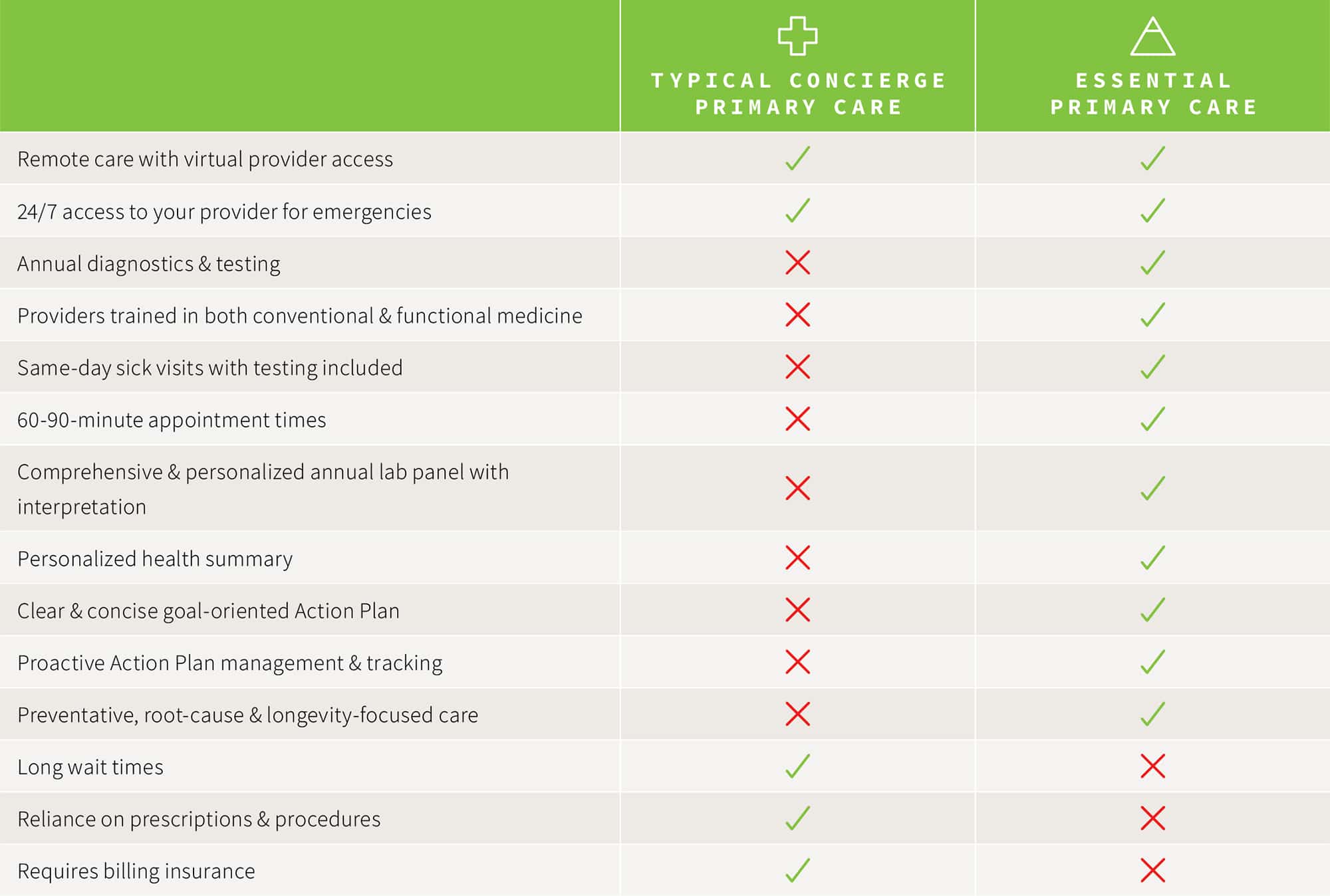Over the past 30 years, different models of healthcare delivery outside of the conventional insurance-based system have emerged with the goal of better addressing the needs of patients and the livelihoods of providers. In the case of primary care, concierge and direct primary care models have enabled patients to spend more time with their provider and have lightened total patient loads for doctors seeking to more effectively care for patients, among other benefits. These membership-based programs have evolved further into sophisticated networks of personalized, on-demand care that have reshaped how providers can practice medicine and how patients can receive care. While these types of practices are similar in concept, they can differ widely due to their ability to remain flexible around insurance participation, office administration, care philosophy, and other factors that impact patient experience.
One example to illustrate how the nuances between practices that offer care outside of the conventional medical model is comparing a typical concierge primary care with Essential Primary Care. Essential Primary Care is a direct primary care model that was created to provide a convenient and comprehensive healthcare experience for the patient.
Similar to Essential Primary Care, most concierge practices will offer remote care with 24/7 access to a provider for emergencies. This is perhaps the most quintessential differentiator for concierge and direct primary care models compared to a conventional care model. It is also the driver, in many cases, for buying into a membership-based practice. Where certain concierge-style practices differ is around what additional services are included within a monthly or annual membership cost and how the patient can expect to experience care. For instance, not all concierge primary care practices guarantee their memberships include labs, diagnostics, interpretation, and personalized health plans and expert guidance along the way. Same-day sick visits with testing are also not standard, nor are shorter wait times for regular appointments.
When considering the philosophy of care held by a typical concierge primary care model, many will adhere to a conventional approach to care itself: reactionary and dependent on medications and procedures. In this case, it may be appropriate for concierge practices to choose to accept insurance or file on behalf of their patients. Essential Primary Care differs from a typical concierge primary care practice through its blending of conventional and functional and integrative medicine, and emphasis on prevention, root cause analysis, and longevity-focused care. This type of care often includes protocols that fall beyond the constraints of insurance which allows Essential Health providers to practice more personalized, advanced care. The value this brings to a patient’s healthcare experience far surpasses what is typically covered under an insurance-based concierge primary care plan.

As healthcare continues to evolve, more patients and providers are looking for alternatives that can better prioritize their needs. While not all membership-based care models are the same, they can bring an innovative, patient-centered approach to care that fosters stronger doctor-patient relationships, improves health outcomes, and prioritizes well-being.
If you have questions about Essential Primary Care or are interested in joining one of our providers’ patient panels, reach out to a location near you or request a complementary Meet & Greet with our experts.

